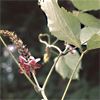 Danshen (Radix Salviae Miltiorrhiza Bge, Salvia Root P.E.) extract is used to treat and prevent heart disease and senility in Asia, according to researchers from China. In some cases, patients might take danshen combined with theophylline (used to treat asthma).
Danshen (Radix Salviae Miltiorrhiza Bge, Salvia Root P.E.) extract is used to treat and prevent heart disease and senility in Asia, according to researchers from China. In some cases, patients might take danshen combined with theophylline (used to treat asthma).
Since they are both metabolized by the same liver enzyme system (CYP1A2), this study was conducted to determine the risk of a drug interaction.
First, the details.
- 12 volunteers took 100 mg of theophylline on day 1 and 15 of the study.
- From day 2 to 15 they received danshen tablets 3 times daily.
- On day 15 they were given 4 danshen with 100 mg of theophylline.
And, the results.
- There were no changes in any pharmacokinetic parameters.
- Peak blood levels, the rate of elimination, time to peak blood levels of theophylline were not changed by danshen.
The bottom line?
There is no pharmacokinetic interaction between danshen and theophylline.
However, the limitation of a study of this type is that it does not rule out the potential for a therapeutic interaction where the pharmacologic effects of one drug might enhance or diminish the response to either drug.
2/4/08 17:08 JR